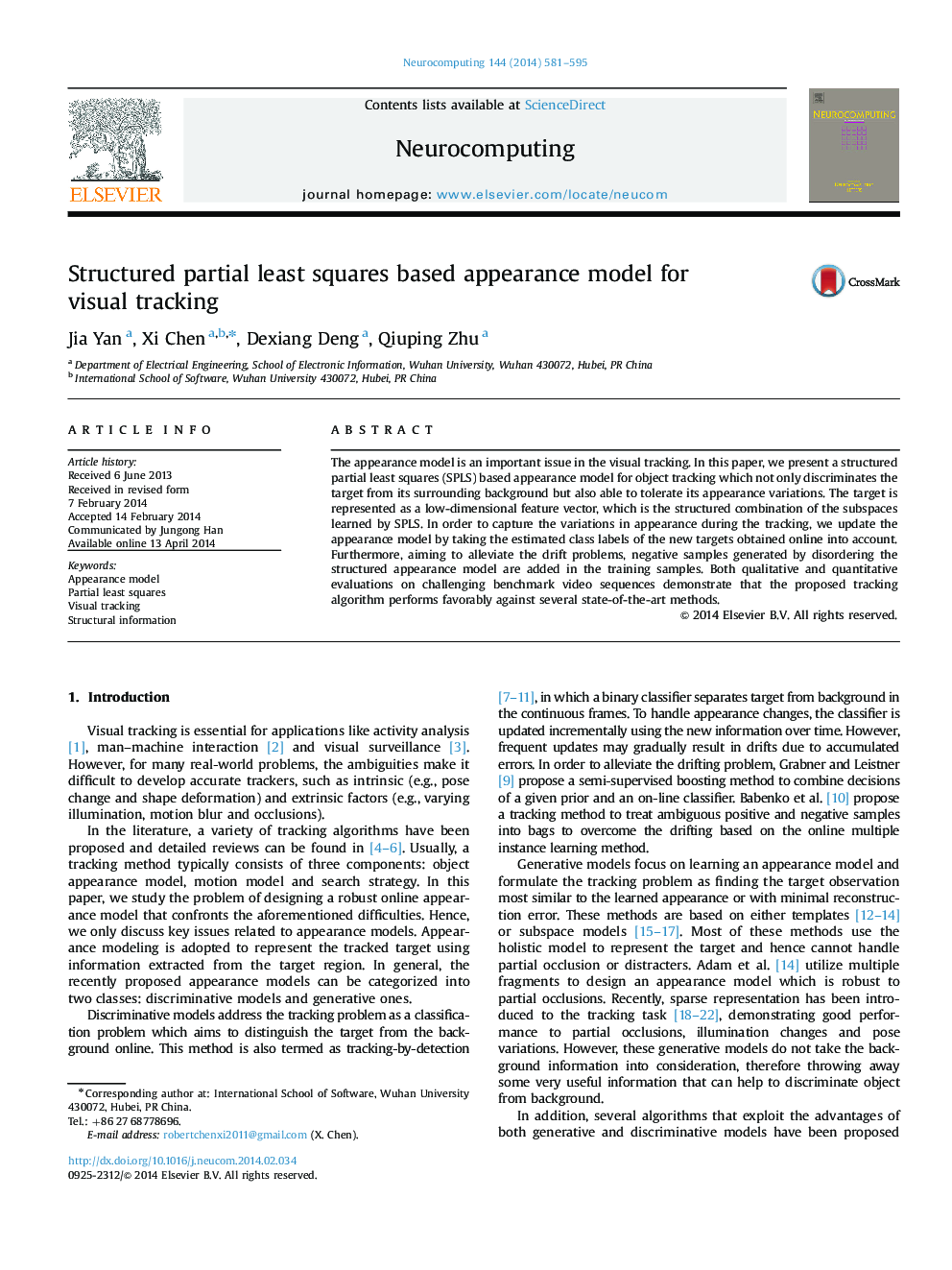| Article ID | Journal | Published Year | Pages | File Type |
|---|---|---|---|---|
| 412231 | Neurocomputing | 2014 | 15 Pages |
•We model the appearance model as a structured combination of the subspaces learned by partial least squares analysis.•The estimated class labels of the new targets are applied to update the appearance model.•The proposed method outperforms the reference trackers on benchmark datasets.
The appearance model is an important issue in the visual tracking. In this paper, we present a structured partial least squares (SPLS) based appearance model for object tracking which not only discriminates the target from its surrounding background but also able to tolerate its appearance variations. The target is represented as a low-dimensional feature vector, which is the structured combination of the subspaces learned by SPLS. In order to capture the variations in appearance during the tracking, we update the appearance model by taking the estimated class labels of the new targets obtained online into account. Furthermore, aiming to alleviate the drift problems, negative samples generated by disordering the structured appearance model are added in the training samples. Both qualitative and quantitative evaluations on challenging benchmark video sequences demonstrate that the proposed tracking algorithm performs favorably against several state-of-the-art methods.
